Planting an edible garden can greatly reduce your home's energy consumption while providing fresh produce. It creates natural cooling through shade and transpiration, lowering indoor temperatures and reducing air conditioning needs. Strategically placed trees and plants act as windbreaks, cutting heating costs in colder months. You'll conserve water with drought-resistant choices and efficient irrigation methods. Growing food at home eliminates energy-intensive steps in the food supply chain, like transportation and packaging. By cultivating your own edibles, you're not just saving on energy bills; you're promoting sustainability and enjoying the fruits of your labor. Discover how your garden can become a powerhouse of energy efficiency.
Natural Cooling Through Vegetation
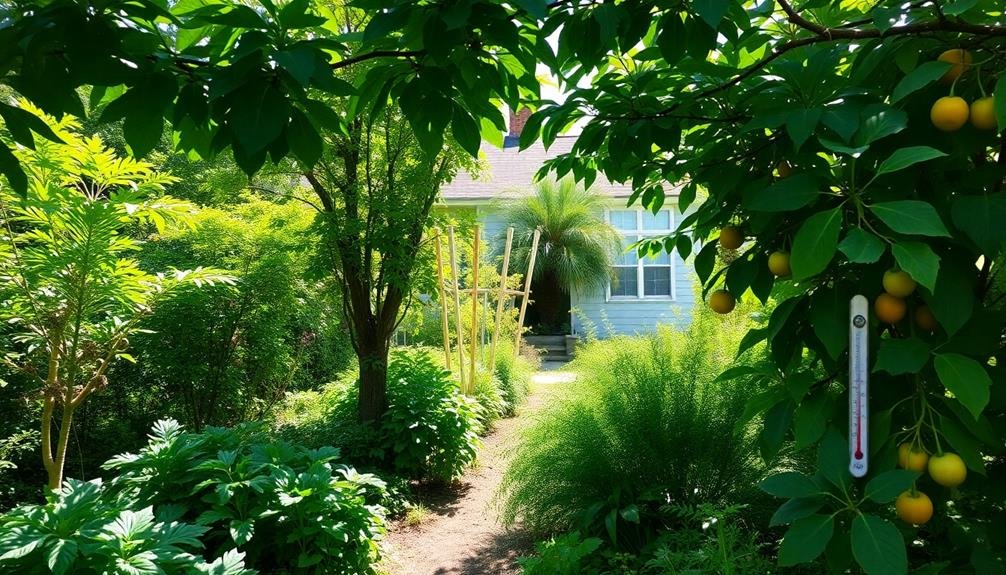
Nature's air conditioning system comes in the form of strategically placed vegetation. When you plant edible gardens around your home, you're not just growing food; you're creating a natural cooling mechanism. Trees and large shrubs provide shade, reducing the amount of direct sunlight hitting your house and lowering indoor temperatures. This can greatly decrease your reliance on artificial cooling systems, cutting down on energy costs.
Leafy plants also cool the air through transpiration, releasing water vapor that absorbs heat from the surrounding environment. By planting a variety of edible plants, you're effectively creating a microclimate around your home that's cooler than the surrounding area. Vines on trellises or pergolas can shield windows and walls from intense sunlight, while ground cover plants help cool the soil and reduce heat reflection.
You'll want to focus on placing deciduous trees on the south and west sides of your home for maximum summer shade. In winter, these trees will lose their leaves, allowing sunlight to warm your house naturally.
Evergreen shrubs and trees can serve as windbreaks, reducing cold air infiltration and further improving your home's energy efficiency.
Strategic Placement for Shade
Where you place your edible plants can make a significant difference in your home's energy efficiency. To maximize shade and cooling, strategically position tall plants and trees on the south and west sides of your home. These locations receive the most intense sunlight during the hottest parts of the day, so shading these areas will help reduce your cooling costs.
Consider planting fruit trees or large vegetable plants like sunflowers near windows and walls that get direct sunlight. They'll create natural barriers, blocking heat from entering your home.
For smaller spaces, use trellises or vertical gardens with climbing plants like beans or peas to shade walls and windows.
Don't forget about your outdoor living areas. Plant shade-providing edibles around patios, decks, and seating areas to create cooler outdoor spaces. This will reduce the heat island effect around your home and make these areas more comfortable for relaxation.
When planning your edible garden layout, think about the mature size of plants and their potential to cast shadows. By carefully selecting and positioning your edible plants, you'll create an energy-efficient microclimate that benefits both your home and your harvest.
Windbreak Benefits of Edible Plants
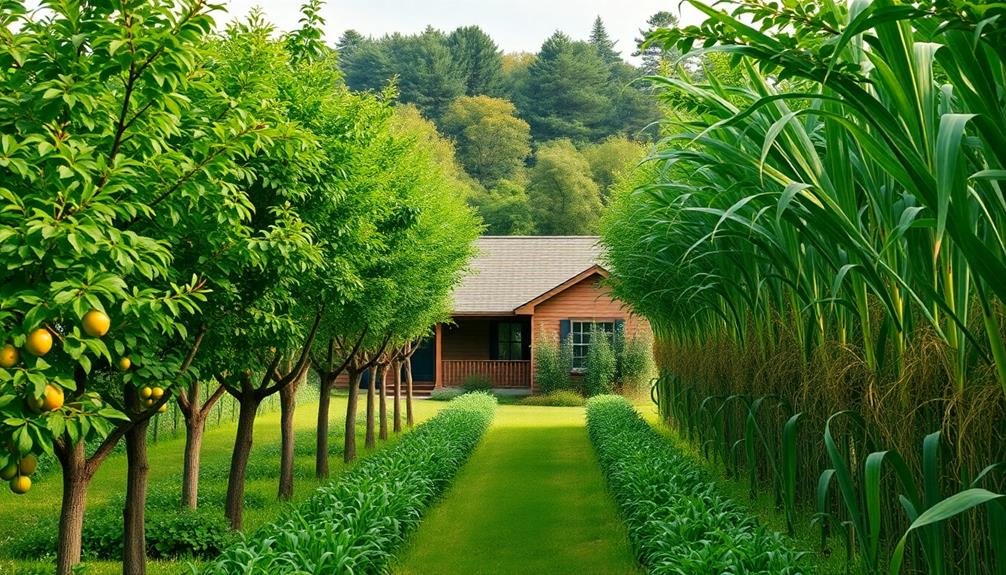
Edible plants can serve as effective windbreaks, offering dual benefits for your home and garden. By strategically planting dense rows of fruit trees, berry bushes, or tall vegetables, you'll create a natural barrier that reduces wind speed and protects your property. This windbreak effect can considerably lower your home's heating costs during colder months.
Consider these edible plant options for windbreaks:
| Plant Type | Examples | Height | Wind Reduction |
|---|---|---|---|
| Fruit Trees | Apple, Pear | 15-25 ft | 50-80% |
| Berry Bushes | Blackberry, Raspberry | 4-8 ft | 20-40% |
| Tall Vegetables | Corn, Sunflowers | 6-12 ft | 15-30% |
| Perennial Herbs | Rosemary, Lavender | 3-5 ft | 10-20% |
Choose plants that thrive in your climate and soil conditions. Plant them in staggered rows for maximum wind protection. As your edible windbreak matures, you'll notice improved energy efficiency in your home. The plants will block cold winter winds, reducing heat loss and lowering your heating bills. In summer, they'll provide shade and help cool your property, potentially decreasing air conditioning costs. You'll also enjoy the added bonus of fresh, homegrown produce while saving on energy expenses.
Water Conservation With Edibles
Conserving water while growing edible plants is a win-win for your wallet and the environment. By choosing drought-tolerant edibles, you'll reduce your water consumption and still enjoy fresh produce.
Consider planting herbs like rosemary, thyme, and sage, which require minimal watering once established. Fruit trees such as figs and pomegranates are also excellent choices for water-wise gardens.
Implement efficient irrigation methods to maximize water usage. Drip irrigation systems deliver water directly to plant roots, minimizing evaporation and waste.
Mulching around your edibles helps retain moisture in the soil, reducing the need for frequent watering. Collect rainwater in barrels or cisterns to use during dry periods, further cutting your water bills.
Group plants with similar water needs together to avoid overwatering some while underwatering others. This practice, known as hydrozoning, guarantees each plant receives the appropriate amount of water.
Reduced Energy for Food Production
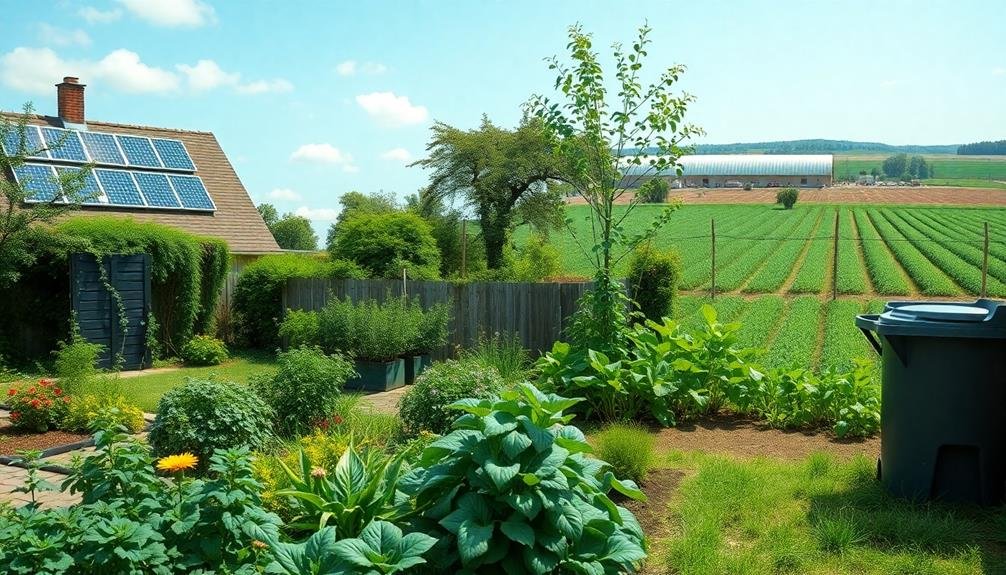
Growing your own food can dramatically reduce the energy required for food production. When you cultivate edibles at home, you're cutting out numerous energy-intensive steps in the conventional food supply chain.
You're eliminating the need for large-scale farm equipment, long-distance transportation, refrigeration during transit, and energy-consuming storage facilities.
Consider the energy savings when you pick a tomato from your backyard instead of buying one that's traveled thousands of miles.
You're not just saving on fuel; you're also reducing the energy used in packaging and processing. Home-grown produce doesn't require plastic wrapping or cardboard boxes, further decreasing energy consumption.
Frequently Asked Questions
How Much Money Can I Save Annually With an Edible Garden?
You can save hundreds of dollars annually with an edible garden. Your savings will depend on the size of your garden, the types of produce you grow, and how efficiently you maintain it. It's a cost-effective way to reduce grocery bills.
What Are the Best Edible Plants for Beginners to Start With?
You'll find success with easy-to-grow herbs like basil, mint, and parsley. For vegetables, try lettuce, cherry tomatoes, and radishes. These plants are low-maintenance, quick to harvest, and perfect for beginners starting their edible garden journey.
How Long Does It Take to See Energy-Saving Benefits From Edible Gardens?
You'll start seeing energy-saving benefits within a few months. As your plants grow, they'll provide shade and cooling effects. You'll also reduce trips to the store, saving fuel. Long-term benefits increase as your garden matures.
Are There Any Government Incentives for Planting Edible Gardens for Energy Savings?
You'll find limited direct incentives for energy-saving gardens. However, you might qualify for broader sustainability grants or tax credits. Check with your local government or energy provider for potential programs supporting eco-friendly landscaping and home improvements.
Can Edible Gardens Help Reduce Carbon Footprint Beyond Energy Savings?
Yes, you'll reduce your carbon footprint beyond energy savings with edible gardens. They absorb CO2, decrease food transportation emissions, minimize packaging waste, and promote composting. You're also supporting biodiversity and sustainable local food production.
In Summary
You've discovered a win-win solution for your home and the environment. By planting an edible garden, you'll naturally cool your space, create shade, block wind, and conserve water. You'll also reduce energy used in food production and transportation. Not only will you save on energy bills, but you'll enjoy fresh, homegrown produce too. It's a simple yet effective way to make your home more sustainable while reaping delicious rewards. Start planting today!


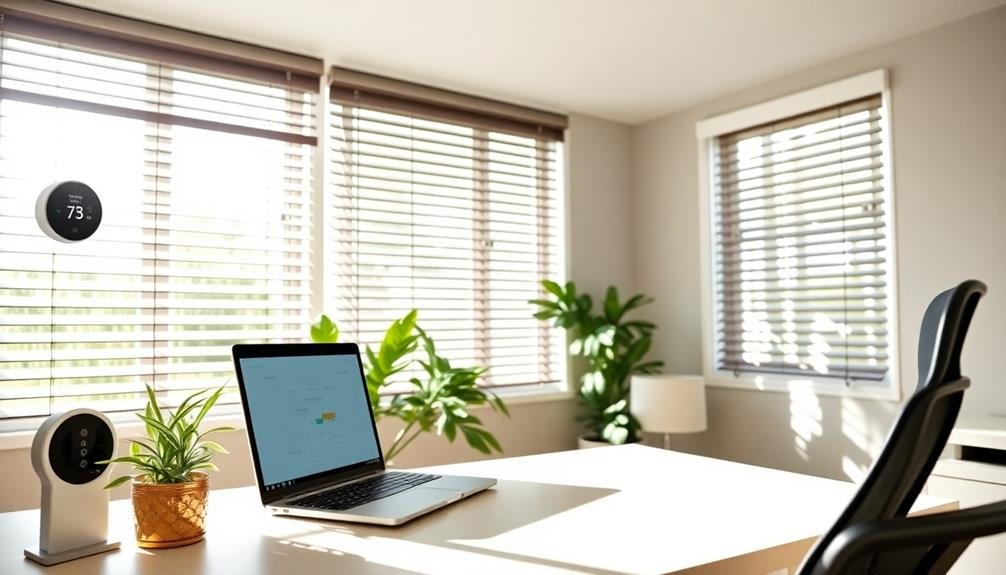
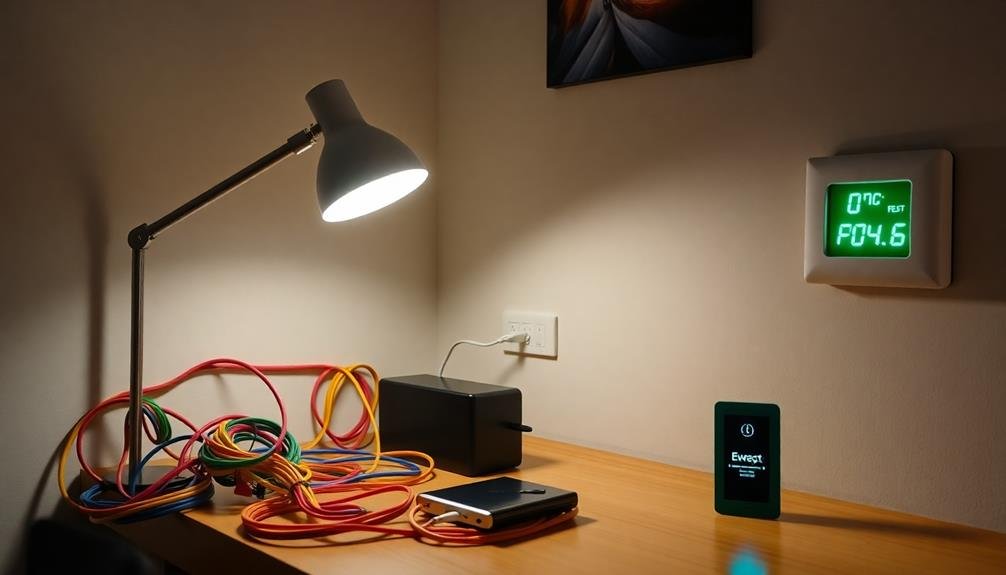

Leave a Reply